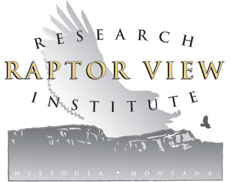What to do if you found an injured bird. Contacts below
Injured Birds
If you find an injured bird, carefully put it in a cardboard box with a cloth so it doesn’t slip around. Cover box with a lid or secure a towel to the top; place in a cool and safe place. Birds go into shock and die very easily when injured, so it’s important to handle them as little as possible. If a bird has hit a window and is still alive, it may just need a little time to regain its senses. Do not try to force feed or especially give the bird water, as they aspirate very easily. After an hour or two, take the bird outside and open the box to see if it is able to fly away. If it doesn’t fly away contact a local wildlife rehabilitator (it’s illegal to possess migratory birds without federal and state permits. Many belong to your state association for wildlife rehabilitators, and can be found with an on-line search.)
Orphaned Chicks
If you have found an orphaned bird, the first step is to determine if it is really orphaned. When many young birds first fledge and leave the nest, they may still have a little down with short tail and wing feathers. Fledglings often also have weak flight muscles and may be fed for a few days by their parents outside of the nest. This is a very vulnerable time for young birds, as they are easy prey for roaming cats and other predators. It is important to keep fledglings safe and to allow the parents to continue feeding them. If the chick is not obviously injured you can place it back into the nest and the parents will still care for it. If the bird has fallen out of the nest prematurely, or if a tree was cut down and a nest of young is found, a rehabber may be needed
Uninjured, naked and cool to the touch – warm it up in your hands for 15-20 min then place it back into the nest. Don’t worry the parents won’t abandon it - that’s just an old wives tale to keep kids from messing with baby birds. If you cannot find the nest, call a rehabilitator asap. Do not try to feed or give water until you talk to a rehabilitator.
Uninjured and mostly feathered but short tail and wings - this is a fledgling. It’s normal for them to be out of the nest and even on the ground. Unfortunately, the ground is dangerous because of cats and dogs. Try placing the nestling back up into the nest tree or even make a little nest to secure up into the tree. Keep cats inside until the brood has successfully fledged, generally, 3-5 days is enough. The parents will come and feed the little one after it calls to them for food.
(Text adapted from National Audubon web site.)
Contacts
Missoula
Wild Skies Raptor Center
Brooke Tanner
(406) 210-3468 or (406) 244-5422
Bitterroot Valley
Stevensville
Judy Hoy
(406) 777-2487
Bozeman
Montana Raptor Conservation Center
Becky Kean
(406) 585-1211











